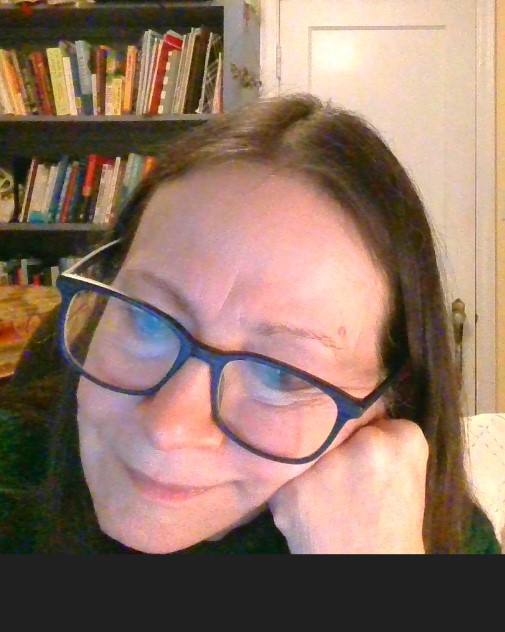Concision and Precision in Flash Fiction
by Barbara Westwood Diehl
Selected notes from my Eastern Shore Writers Association Bay-to-Ocean Writers Conference presentation on March 8, 2025
Concision and Precision in Flash Fiction
And by concision, I mean conveying meaning with as few words as possible and by precision, I mean the quality of being accurate, exact, and distinct.
So what am I talking about when I talk about short forms? And what’s so great about them?
Micro fiction is usually defined as 300-400 words or less (for the annual Best Microfiction anthology—400 words or less); flash fiction is usually 1,000 words or less. I’m including prose poems under this short-forms umbrella. The lines between the genres can often be blurry.
The short forms provide more of a license to experiment, for example, to introduce more elements of poetry into a piece than you usually would with a longer, more traditional short story. Some experimental forms would be difficult to sustain in a longer work—and likely a challenge for readers, too.
Flash often has a sense of intensity, an urgency. I see a lot of flash in present tense, which makes it feel more immediate. Plunging the reader right into the story does this, too, of course.
Flash is often surprising, with some twist or element that stuns.
Even the shortest fictions usually have a narrative arc, even if parts are only implied, or the readers are able to fill in the gaps and come to their own conclusions. This brings to mind paintings and graphic designs with broken lines that the human brain can easily fill in.

Baltimore Review Editors—among many other editors—read a lot and we want to be surprised, shaken up, our attention captured. We want clarity. A short work with focus and all the parts in sync, working together to create an emotional impact. Much like longer work: a beginning that gives the reader a reason to keep reading, a middle that doesn’t sag, and an ending with impact, surprising but still the natural culmination of everything that came before.
With a short piece, you can wrap your mind around the whole and focus on making each word, each sentence, work toward the effect you want.
What’s so great about them?
The best short works deliver an impact, quickly. They’re memorable. They make us think of the world in fresh ways. They can create empathy. They’re fun to write, and they’re versatile—you can publish them in bite-size pieces or string them together into a longer work if you decide to do that. I also believe that having constraints can aid you in being a more creative writer and in being a better self-editor.
There’s a solid market for them. Take the Chill Subs database. You can filter by flash fiction and get 905 literary magazines; 69 for micro fiction. And if your goal is publishing a book-length work, having short works published in at least a few reputable literary journals can provide you with some credentials. There’s also a supportive community out there for flash fiction writers. I see a lot of that on social media.
So—concision and precision
Concision and precision are tools to enhance clarity for your reader and create a connection with your reader. Think of it as calibrating a camera lens to get the sharpest image possible. First, some of these methods—and then examples.
Concision methods
Most obviously—using the fewest words for maximal clarity and impact. Economy writing. Like economy cars that get great mileage. But maybe hybrid cars would be a better comparison.
A frugal use of language, using only the words that are absolutely necessary. Taking time to revise and cut out any excess words, lazy words, clichés, words that fog up the meaning, words that don’t even register as blips on the reader’s radar. Words you want to swat out of the way like gnats.
Sometimes rearranging the order of words can allow you to trim a word or two. Like “word order” instead of “order of words.” (Although sometimes my poetry ear wants to add a syllable.)
Repetition: Sounds counter-intuitive, but no. Repetition of certain words, phrases, structures, images—can be used for reinforcement, enhancement, and development of ideas instead of coming up with new ideas and images to roll around in a reader’s head. This is an efficient and focused use of language. Repetition can stitch ideas together with fewer words, less effort.
Use of a particular image or phrase near the beginning and the end of a piece—an echo—can provide a satisfying coming-full-circle feeling for a reader.
Concision on a larger scale: (more like excision, cutting out chunks of text, exposition—like lengthy descriptions, background information, historical context, world building, information dumping—that aren’t necessary for your short work, text that slows the pace, that works against tension, that readers’ (and editors’) eyes tend to skip over. A reminder here that we’re talking about compressed forms here—although some of these short-form characteristics can often be used to tighten up longer works of fiction.
Figurative language and vivid imagery can also be viewed as a concision and precision tool—the picture—or a metaphor or a sensory image—is worth a 1,000 words idea (so concision). The right image can do a lot of heavy lifting for you.
Another language efficiency: sometimes purposely using words with multiple meanings—provided all those definitions work toward deepening the meaning of your story or prose poem (or sometimes adding a touch of humor).
You can also be concise in sentence lengths. Shorter sentences—but not choppy—can sometimes be easier for readers to digest. And sentence fragments are often fine, too. More like natural speech. You can break some of the rules of formal writing.
Use of speech in your short works (sometimes in italics in very short work), even only a snippet or two, can aid in concision. You can ramble on for sentences, or paragraphs, describing someone’s personality or a relationship between characters—or you can have someone say something. And I think our ears perk up when we see dialogue; we’re in scene and engaged. You may not see as much dialogue in short-short work, but when it is, as in longer fiction, dialogue should serve the purpose of revealing character and moving the plot forward. Not the mumbling and rambling of real life.
Another way you can cut words from a short piece: make the title do a lot of work. Hence, some of those long titles we see—which usually aren’t included in word counts, by the way.
And some precision methods
Know the definition—denotation and connotation—and usage for each word in your flash. For example: I used the word frugal when I was talking about concision. When I started writing my notes, I used stingy, but I looked the word up, and the definition wasn’t quite what I had in mind. I also considered thrifty. Merriam Webster had 52 synonyms for stingy. Look words up. Make sure each word is exactly what you have in mind.
Like that famous line from The Princess Bride: “You keep saying that word. I do not think it means what you think it means.” Know what the words mean.
If you’re precise—if you’re using strong nouns and verbs—you don’t need many adjectives and adverbs. Similes are great, but look at how many you’re using. Do you need them all? Everything doesn’t have to be compared to something else. Purple prose—language that’s flowery and pretentious, multisyllabic, melodramatic—just don’t. Lean toward the natural. Maybe a touch smarter and less sloppy than natural, but tipping in that direction.
When you use sensory detail, you are being precise. You can say something smells sweet—or you say something smells like you just popped open a can of Betty Crocker Rich and Creamy Vanilla Frosting. The more precise the sensory imagery—what readers can taste, hear, smell, see, and feel—the more intense and immersive the experience is for the reader. And make sure those precise and sensory details are working together to create a coherent experience. By coherent I mean integrated and clear, and holding together.
Revision
Generative writing practice is great to warm yourself up, to discover what’s piquing your interest or what’s bothering you, to get some words on paper—but you’ll need to work on those words to get them in publishable shape. If you’re breaking tradition, for example, with formatting or punctuation—do it with a purpose. This shouldn’t come across as gimmicky or plain old errors. Considering what you know about concise and precise writing, read your short piece over and over again, out loud, and ask yourself if every word in your work is carrying its weight, if every word is the best word, if all the words are working together to create a unified effect. Do you experience an emotional impact when you finish reading it? If you can, ask a trusted reader to give you some honest feedback. Not someone who will just pat you on the back.
Submission
If you’re on Facebook, you can find groups that are seriously into flash fiction. You can also use resources like Poets & Writers, NewPages, and Chill Subs to cruise through journals. Chill Subs has great filters for finding journals—what their reading periods are, genres and subgenres, their vibe, and more. Often, flash isn’t a separate fiction category in Submittable. Many journals like their fiction on the short side. Flash fiction is simply—fiction. Same for prose poems. They’re not always a separate category. Spend some time cruising through the journals. Familiarize yourself with them. Some you’ll love; others, not so much.
Consider what matters to you. When sampling journals—and this is the beauty of being able to read so much online now, for free—read at least a few works, maybe check out a past issue or two, as well, to get a feel for what they publish, to see if you like what they publish and if you think your own work might be a good fit. Look at the masthead (there should be a masthead). How do you feel about the publishers? Do they charge fees (many do), and how do you feel about that? Some writers are fine with small fees; they're all for supporting the journals they love. For other writers, fees are a problem. Do you like the way the journal presents the writers’ works? Would you feel good (and not kind of embarrassed) to have your work on the site? Is the journal active on social media and helping to promote the writers they publish? Can you find those journals in annual prize anthologies like Best Small Fictions, Best Microfiction, Best of the Net, and others that publish the writing you love to read and write.
With apologies for all the em dashes. (They help me read my presentation notes and, OK, I really do like em dashes way too much.)

All the best to you writers of short forms!
